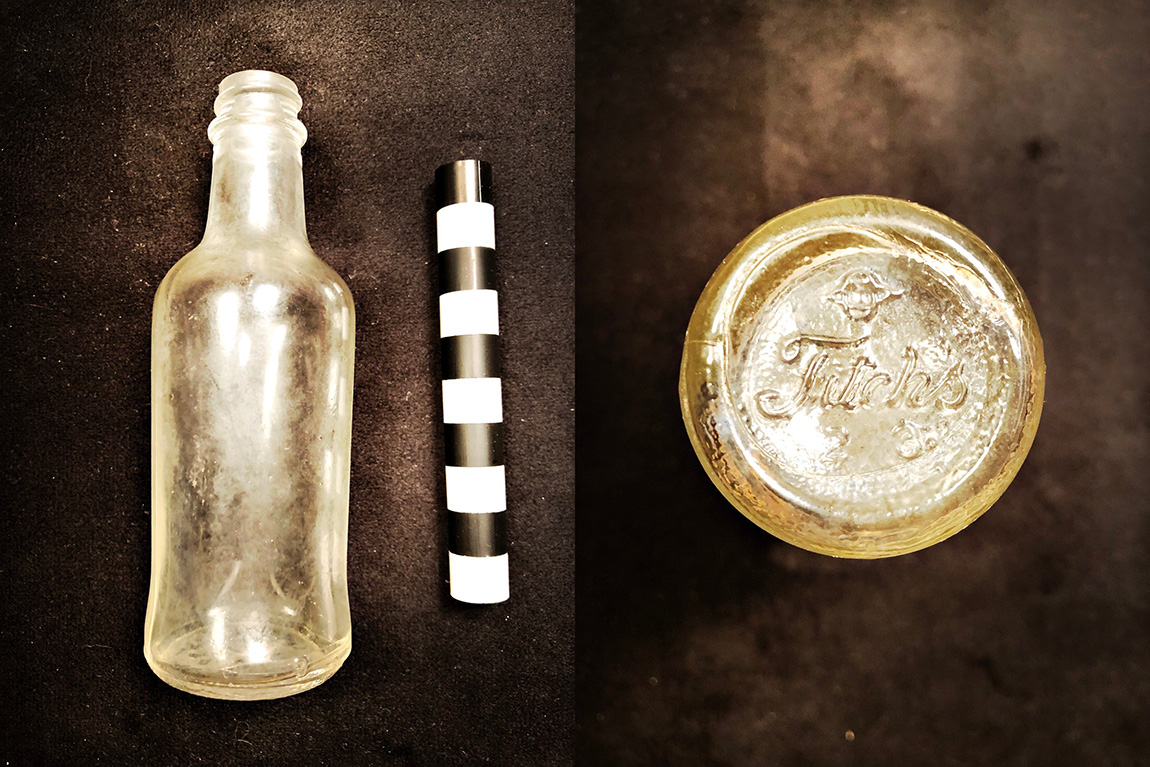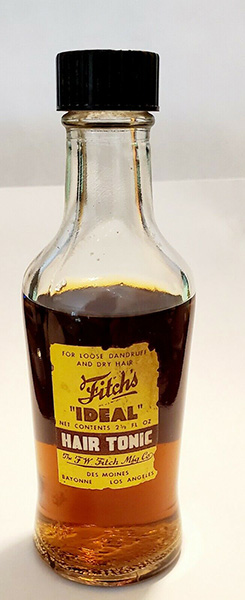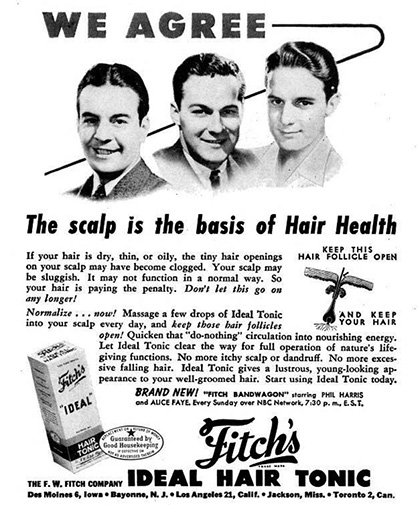
Dr. Matthew P. Rooney, UAM Station Archeologist
Artifact of the Month - December 2021

This small glass bottle (Figure 1) has a vertical side mold seam, indicating that it was machine-made after the year 1900. There is a suction scar on the bottom that indicates that it was likely produced with an Owens Automatic Bottle Machine, which began seeing massive use after 1905. The base of the bottle has “stippling,” a gripping texture that helped the bottle stay on the conveyor belt in the factory but was also intended to be aesthetically pleasing. Stippling first appeared on bottles produced in 1940. The base also features an “I” logo enclosed in a circle and a diamond, which indicates that it was produced by the Owens-Illinois Glass Company between 1929 and 1960 (Society for Historical Archaeology 2021).
The intended use of this bottle is revealed by the word “Fitch’s” appearing on the base. The F.W. Fitch Company was founded in 1892 by Frederick Walter Fitch, a barber who successfully developed and marketed hair products throughout the early twentieth century. A review of other Fitch’s bottles (Figure 2) (eBay 2021; Worthington 2021) shows that this particular bottle contained “Fitch’s Ideal Hair Tonic,” which sold in 1936 for 50 cents (American Druggist 1936:89). In magazines that same year, Mr. Fitch posted advertisements offering a $1000 reward to the first person who could show him evidence of a “dandruff germ” and prove that this “germ” causes dandruff (American Druggist 1936:30). Fitch marketed a “Dandruff Remover Shampoo” that was to be used by men once a week along with the “Ideal Hair Tonic.” It appears that this was intended for people with European ancestry, as the advertisements note that it “is equally good for blondes or brunettes.” Fitch offered a counter display to retailers with a “complete scalp treatment” package containing the shampoo, the tonic, and a rubber scalp brush (American Druggist 1936:89).
Fitch’s was so successful during this period that it sponsored a series of radio variety shows beginning in 1938, called The Fitch Bandwagon, that featured popular musical acts of the day (Figure 3) (OTRCAT 2021). However, after the end of the Second World War, the company saw its sales decline, possibly due to a loss of military contracts (Exile Brewing Company 2021). The company was sold in 1949, after which the line of products was marketed under the name “Fitch” rather than “Fitch’s.” This means that this particular bottle was probably produced prior to 1950.

